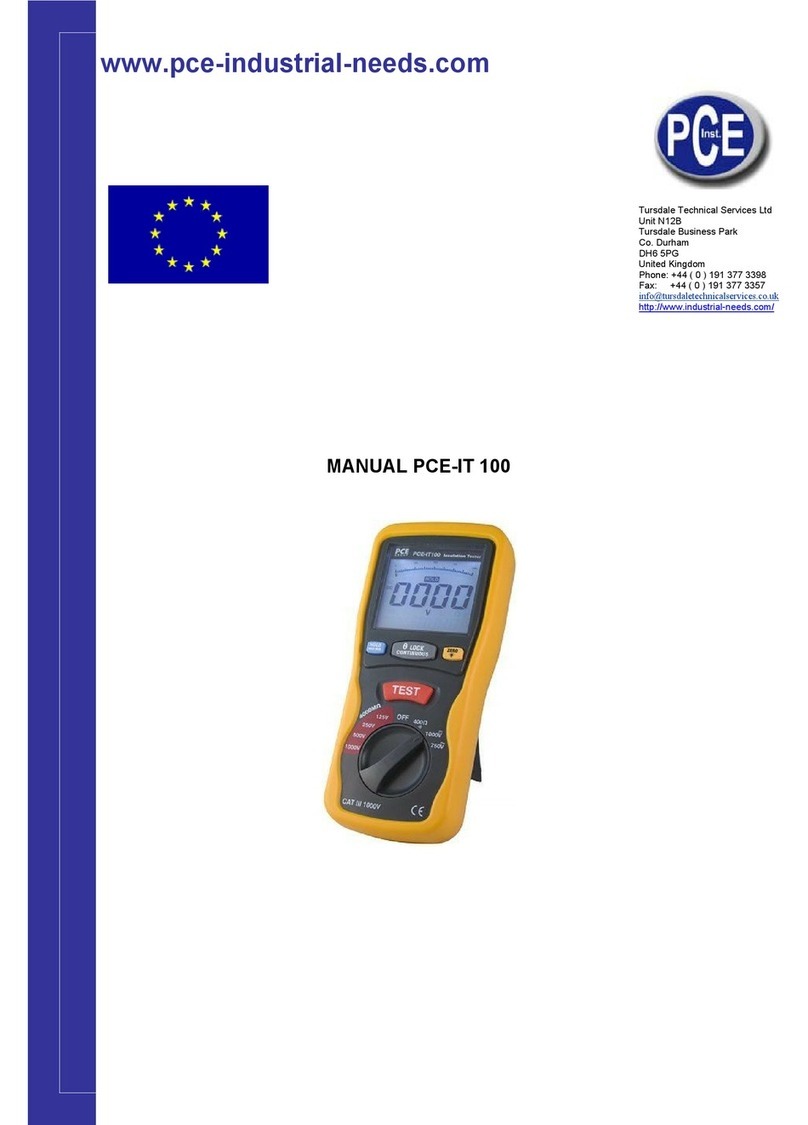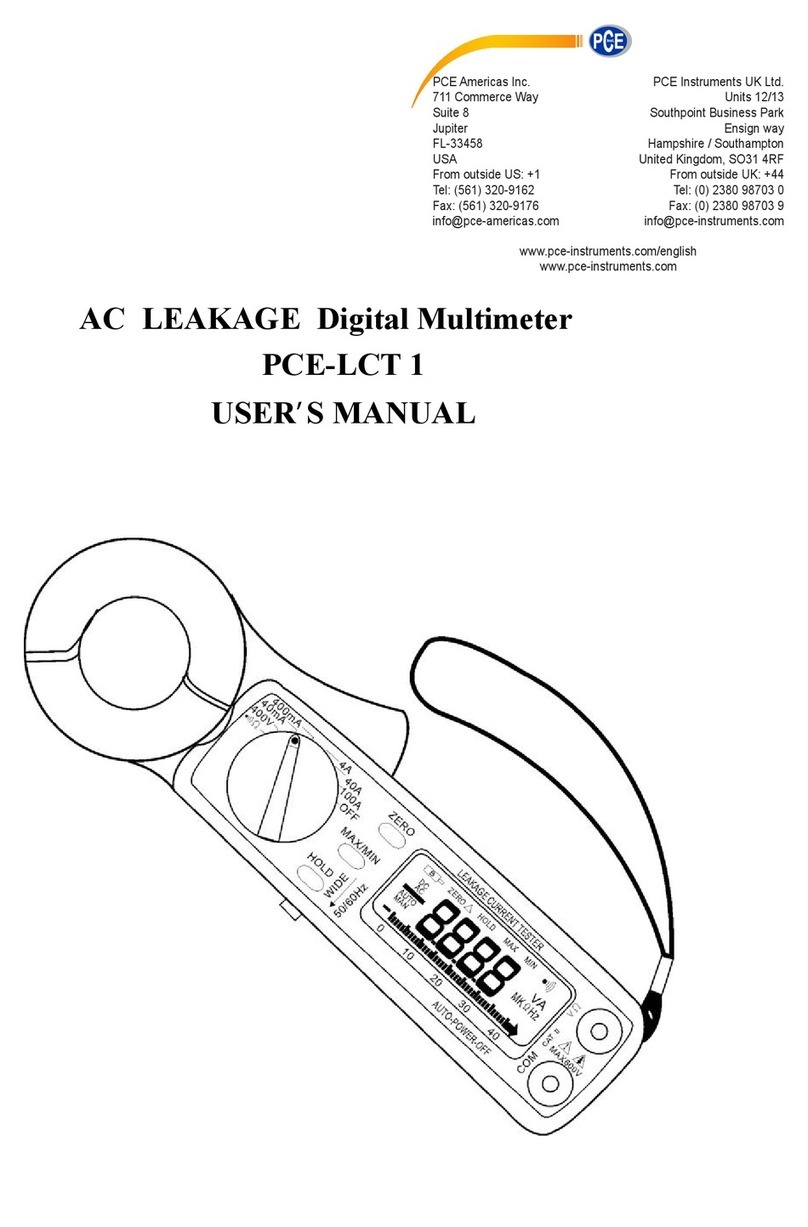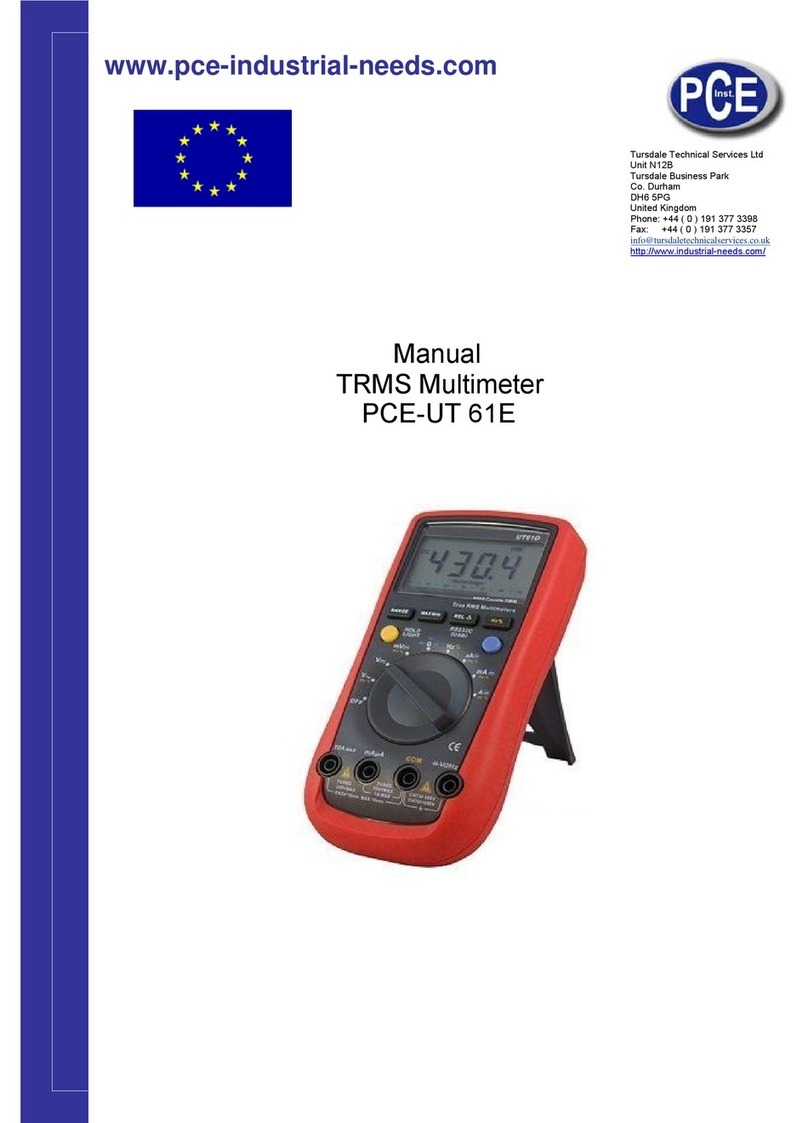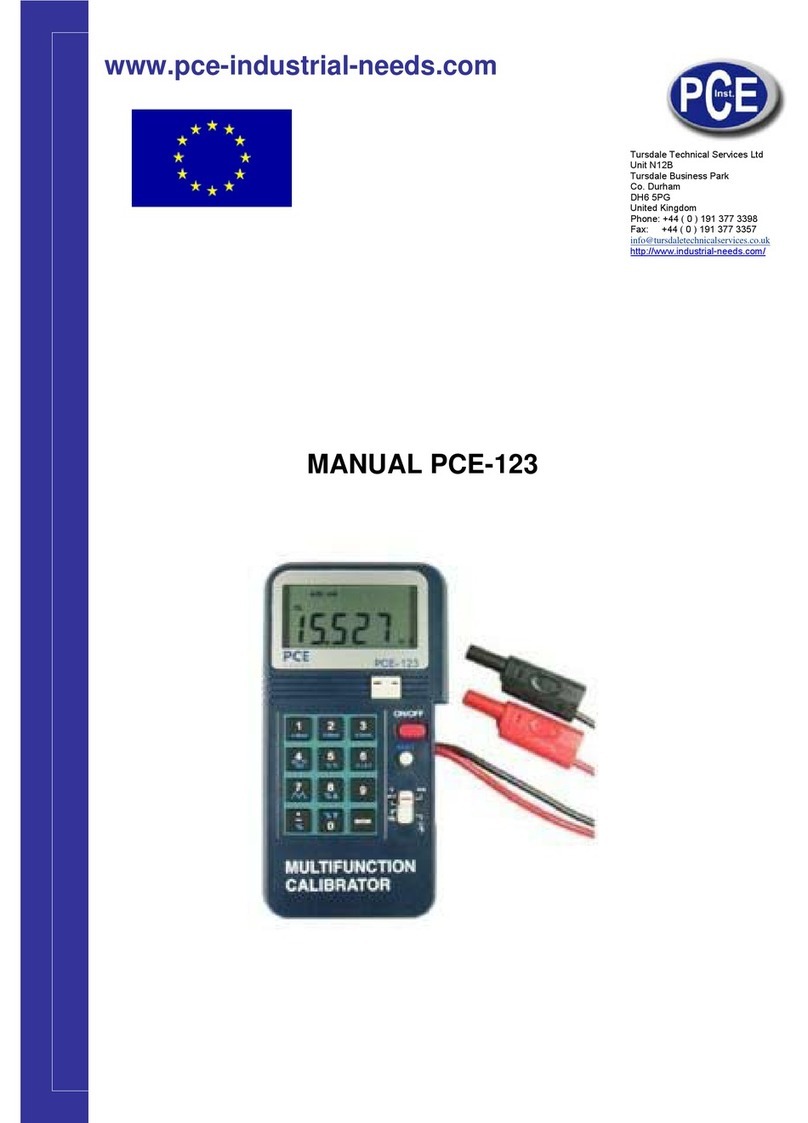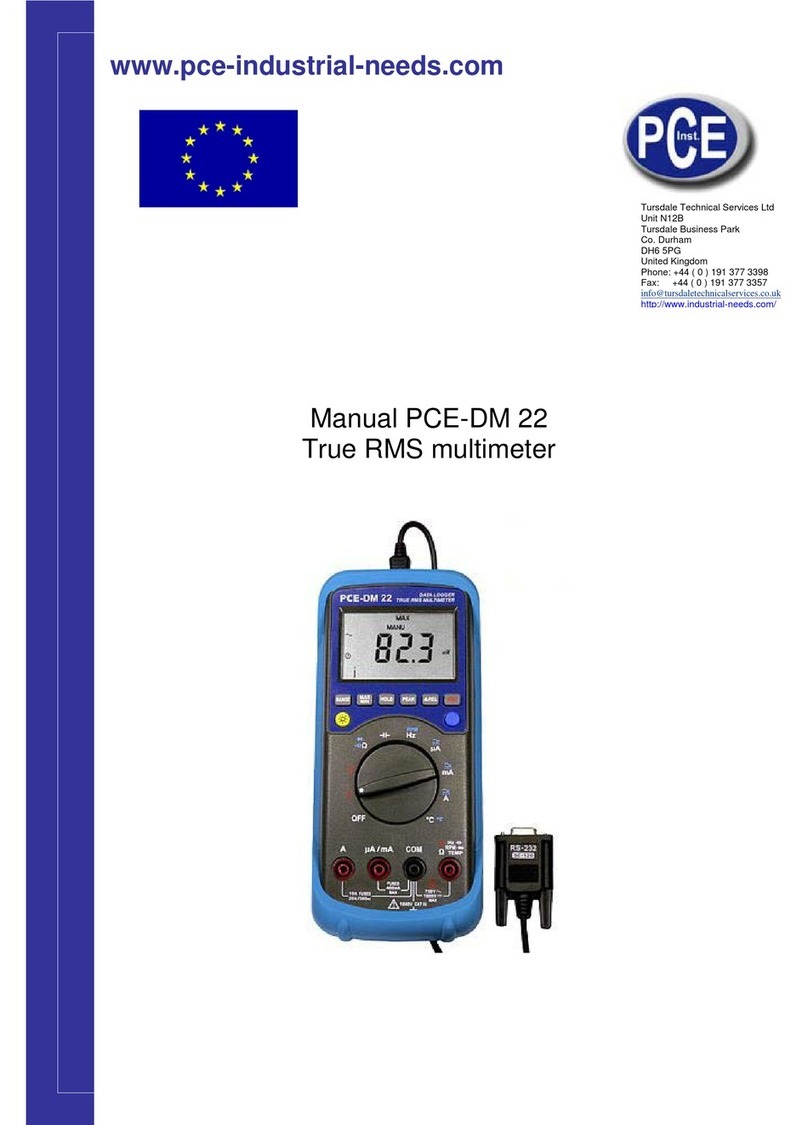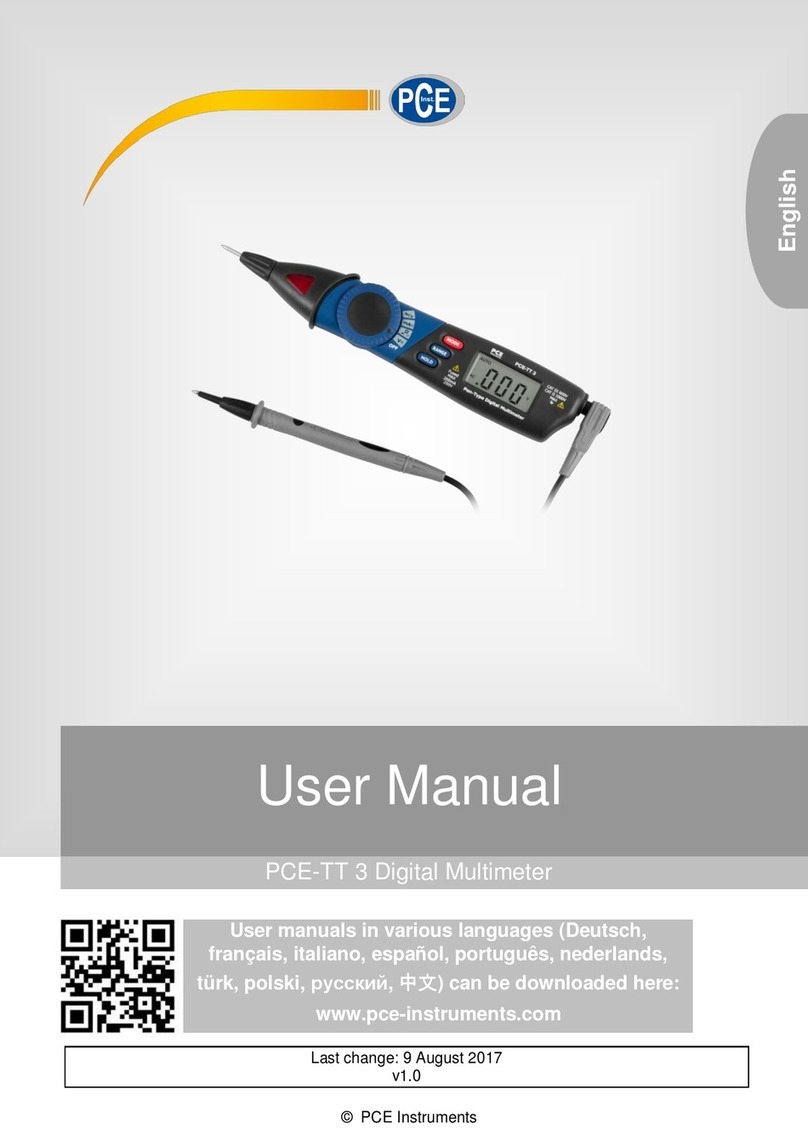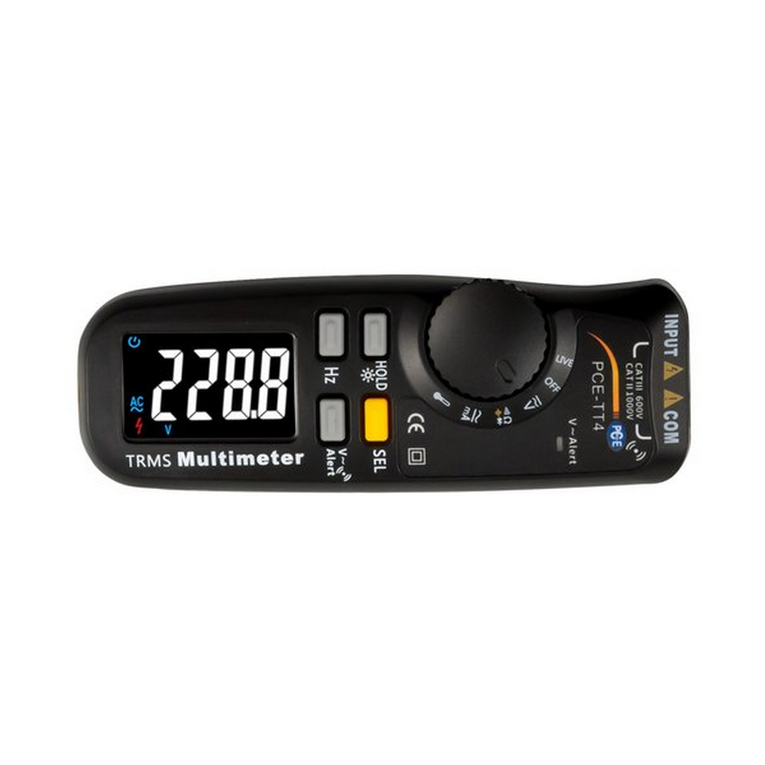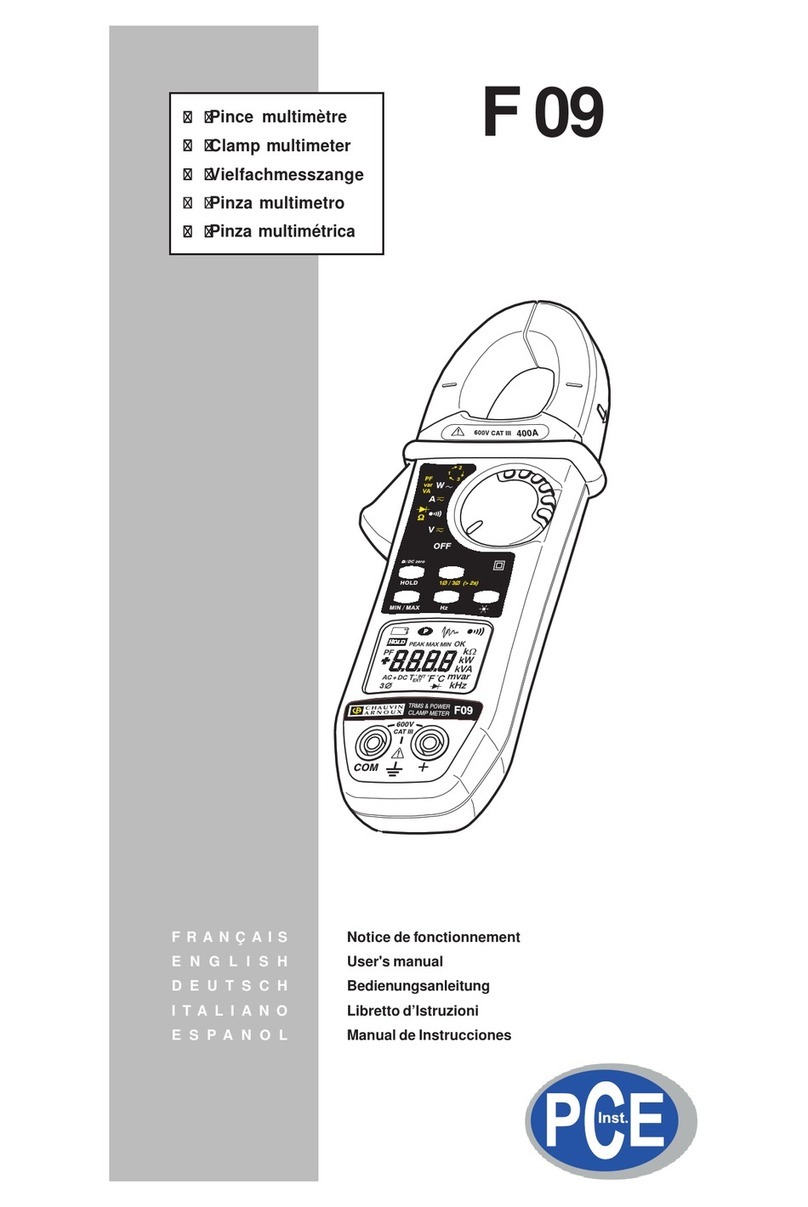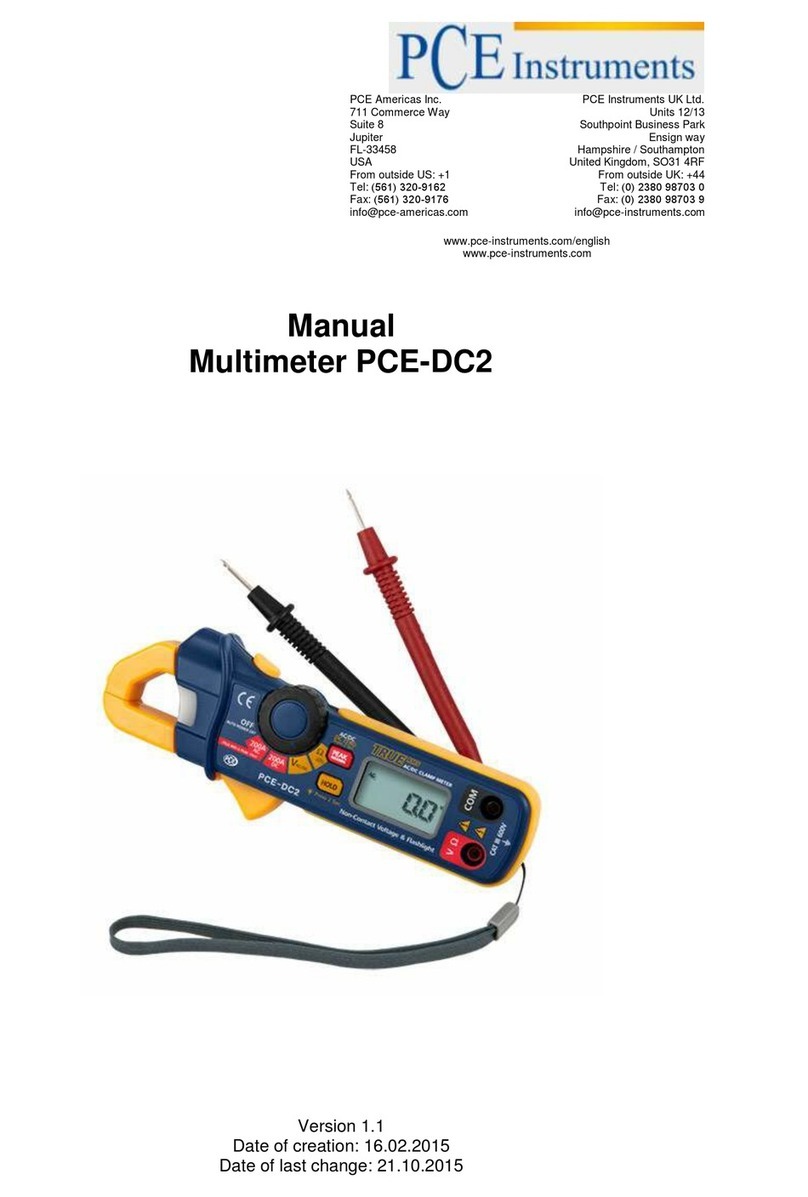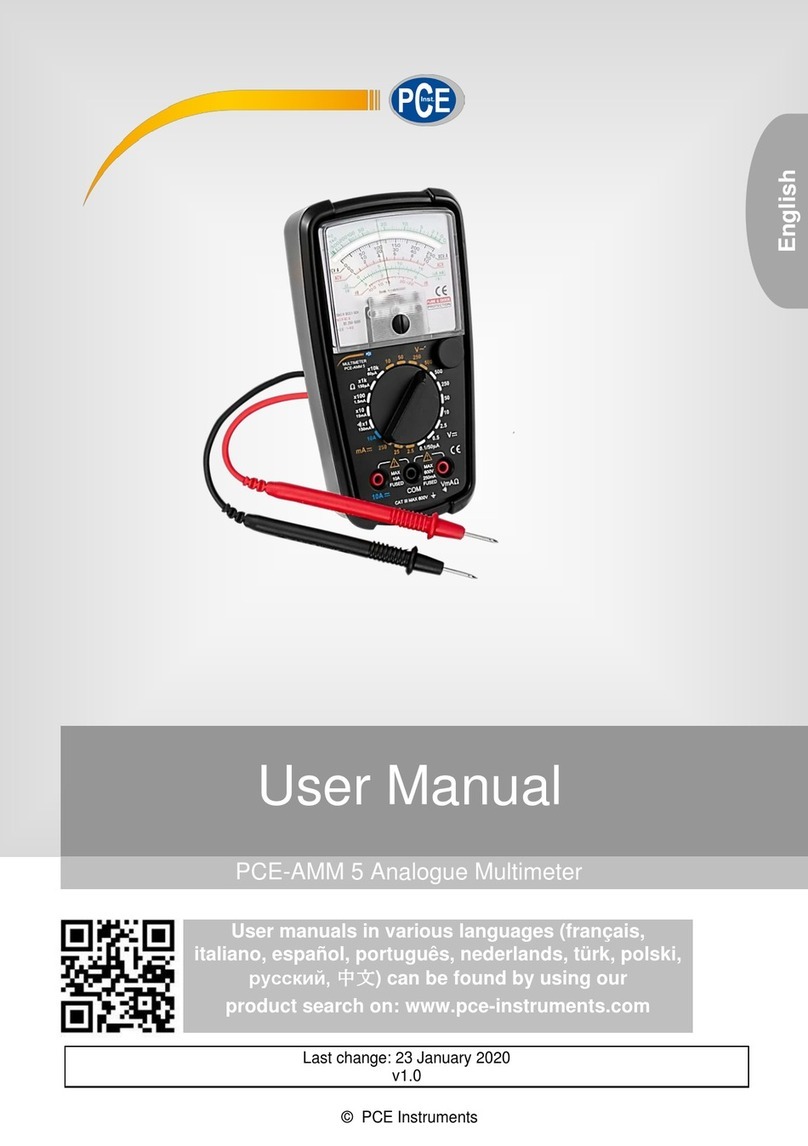© PCE Instruments
Contents
1Safety notes.................................................................................................................... 1
2Introduction.................................................................................................................... 2
2.1 Lieferumfang...................................................................................................................................................................... 2
3Technical specifications................................................................................................ 2
4System description........................................................................................................ 4
4.1 Device................................................................................................................................................................................ 4
4.2 Display............................................................................................................................................................................... 4
5Input shutter................................................................................................................... 5
6Non-contact voltage testing .......................................................................................... 5
7AC/DC current measurement......................................................................................... 5
7.1 Zeroing .............................................................................................................................................................................. 5
8AC/DC voltage measurement ........................................................................................ 6
9Resistance / continuity / diode / capacitance measurement....................................... 7
9.1 Continuity test.................................................................................................................................................................... 7
9.2 Diode test .......................................................................................................................................................................... 7
9.3 Capacitance measurement................................................................................................................................................ 7
9.4 Resistance measurement.................................................................................................................................................. 7
10 Frequency measurement............................................................................................... 8
11 µA DC/AC current measurement................................................................................... 8
12 K-type temperature measurement................................................................................. 9
13 Hold readings................................................................................................................. 9
14 MIN/MAX......................................................................................................................... 9
15 Hold peak value.............................................................................................................. 9
16 Measurement range ....................................................................................................... 9
17 LED backlight................................................................................................................. 9
18 Activate / deactivate lamp.............................................................................................10
19 Auto Power Off..............................................................................................................10
20 Battery level indicator...................................................................................................10
21 Replace the fuse............................................................................................................10
22 Warranty ........................................................................................................................11
23 Disposal.........................................................................................................................11
